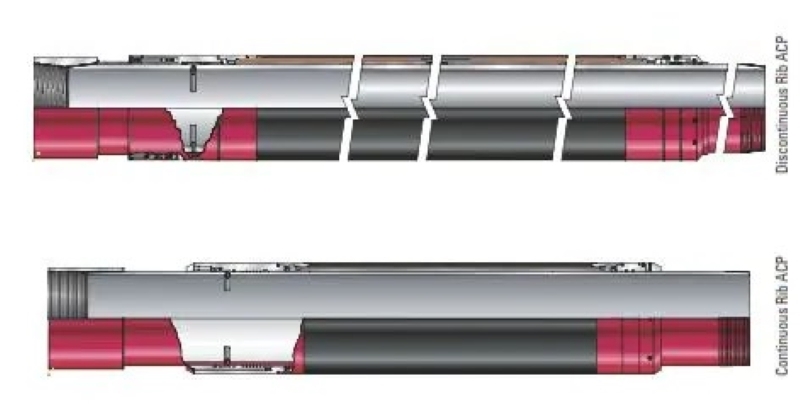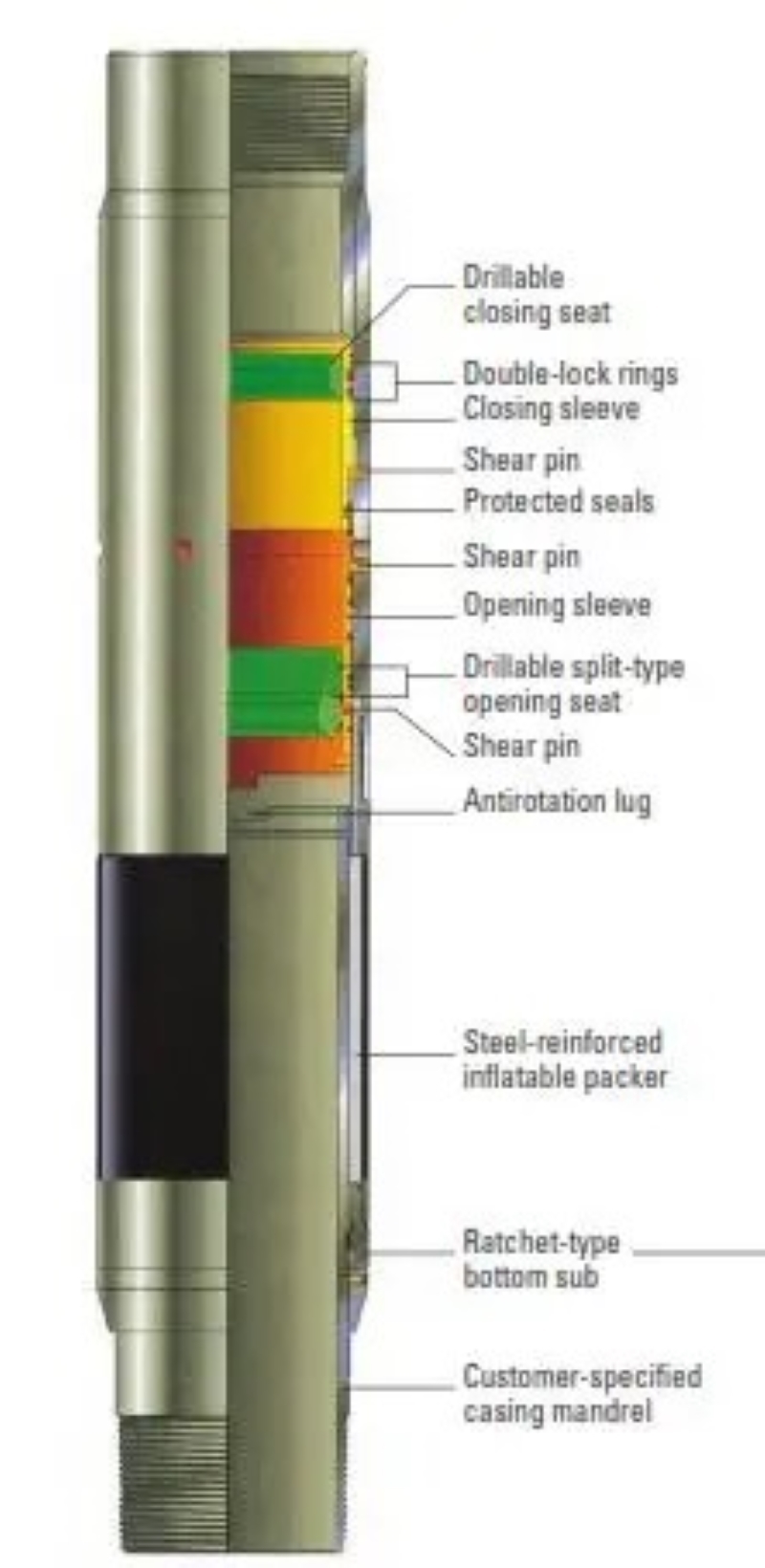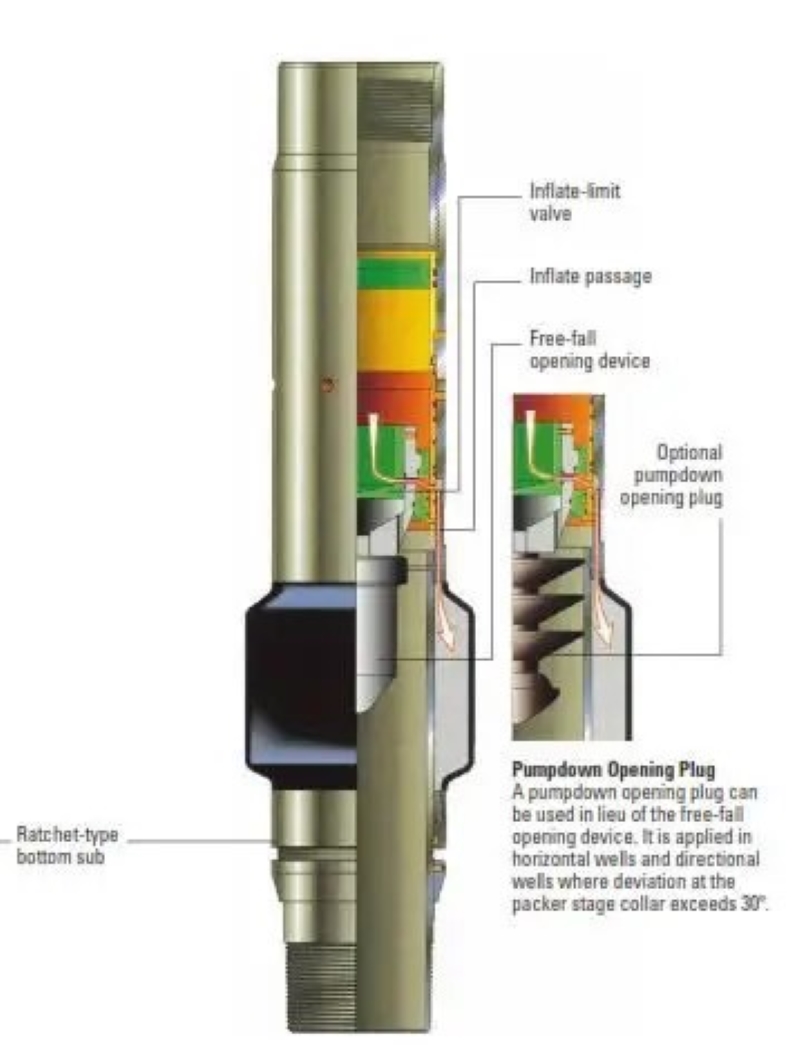
Applications and principle of External Casing Packer
Introduction
External Casing Packer, also known as ECP or Annular External Casing Packer, are one of the packers types that is popular because they provide improved sealing and centralization. They have broad application prospects, including prevention of gas migration, reduction in the production ratio of natural gas to oil, and reduction in water production, isolation of production or injection areas and avoidance of squeeze cementing.
Type
ACP sizes and valve types vary depending on their use. Most can be filled with mud or cement, but there is a limit to the pressure they can withstand. Overfilling is the main cause of casing packer failure. The two types of ACPs are shown below.
Annular containment equipment (packer boots, collars, and ACPs) is used to protect a formation area from excessive hydrostatic pressure or contaminated fluids, or both. The devices have expanding rubber elements that press against the formation to form an impermeable annular barrier. The rubber elements also center the casing as they expand.
External casing packers are typically used below grade or port rings to protect the formation below from excessive hydrostatic pressure or contamination. They are also used to stop the migration of gases and fluids. ACP can be installed on either side of a weak formation.
Running in Hole
Shows packer stage collar in running position with opening and closing sleeves pinned in place. The lower section of the split-type opening seat isolates inflate passage, preventing premature inflation of the packer.

Inflating Element
The free-fall opening device enters split-type opening seat, shearing the pins in the lower section. This allows lower section to move down exposing the inflatable packer element to the fluid and pressure inside the casing. Fluid enters the packer element through the double-seal in the free-fall opening device and the split-type opening seat and inflation passage in the tool body.
Working principle
ACP/ECP packers can be sealed by inflating or compressing the rubber element (Figure 4). The inflatable type is usually larger and better able to plug oversized or irregular holes. The inflation process usually begins at a predetermined set pressure. The setting pressure should be high enough to prevent premature sealing during mud conditioning or initial cementing.
An optional disconnect lever can be used to prevent premature solidification by blocking the inflation port until it is disconnected by the wiper plug. Once the element is inflated, the internal valve mechanism will remain in the inflated position and surface pressure can be relieved. Where possible, cement should be used to inflate the element.
Application in Practice
According to different situations, one or more packers can be installed outside the casing. The packers will expand when encountering oil and gas, and can also achieve sealing effect, preventing the flow of gas between layers and gas layers. This type of packers not only can block gas channeling, but also can withstand a certain pressure difference. When not activated, they are in a latent state, and only after the cement sheath sealing fails, will they expand and form a sealing.
The most commonly used packer abroad is the expansion rubber packer, which has significantly improved its performance in practice and has increasingly prominent advantages. Nowadays, it is widely used in fields such as acid fracturing, cementing completion, horizontal wells, intelligent wells, and multi branch wells, making up for the shortcomings of traditional cementing techniques. As an external pipe packer, its performance is better than that of conventional packers. The application of expansion rubber packers is as follows:

(1) Asia Pacific region
Horizontal well drilling fluid channeling problem: There may be drilling fluid displacement problems in the horizontal section, which may leave drilling fluid channeling and reduce cementing quality. The output of Well A is 100% pure oil, which is a good expansion medium. After cementing, no phenomenon of downhole fluid flow was found
(2) Northern United States
Due to severe interlayer interference, it has led to multiple well cementing failures, and the crossflow can even return to the surface. The root cause is that the wellbore penetrates formations with different pressure systems, and fluids are easily invaded from high-pressure layers, while low-pressure layers can cause cement leakage and form multiple drilling fluid channels. In this construction, the expansion rubber packer combined with cementing technology successfully replaced the complex and time-consuming multi-stage cementing process, as shown in Figure 2-2. The production results indicate that there was no interlayer interference in the well and the expected maximum production was achieved.
(4) North Sea oil fields in the UK
Faced with problems: It is difficult to replace low edge drilling fluid, alternating between depleted and producing layers, and there are also producing layers, making cementing construction difficult. During construction, connect the expansion rubber packer to the completion liner and inject cement for sealing. Except for the water expansion type packer used in the upper part of the aquifer, the rest are oil expansion type packers. During production testing, no formation water was found to have emerged, and the formation sealing met the requirements.
Packer Shoes
Packer boots and collars are external casing packers with multiple uses, functions include:
(1).Sealing the bare eye below the casing to help protect low-pressure formations from cement contamination.
(2)Floating and guiding the casing to the bottom.
Allow fluid to circulate through the casing before the tool is placed in the bare eye
(3)The annular casing packer boot is set hydraulically by raising and lowering the drill ball. With the casing in place, the tripping ball drops and lands on a seat on the piston. When pressure is applied, the load is transferred to the external sleeve of the compression and expansion element. At a pressure of approximately 800 psi (5.5 MPa), the piston shears freely, exposing the port. The external sleeve contains a ratchet mechanism that permanently holds the set position. The cement is pumped and, unlike stage equipment, the ports are not closed.
Summary
The application of expanded rubber packers in cementing engineering can help solve the problems of drilling fluid channeling and first cementing interface micro gaps caused by low displacement efficiency, and has broad application prospects in improving cementing quality. The expansion rubber packer has a simple structure and does not require specialized personnel or tools during the insertion process. It is convenient for construction and safe and reliable to use.


Follow Us